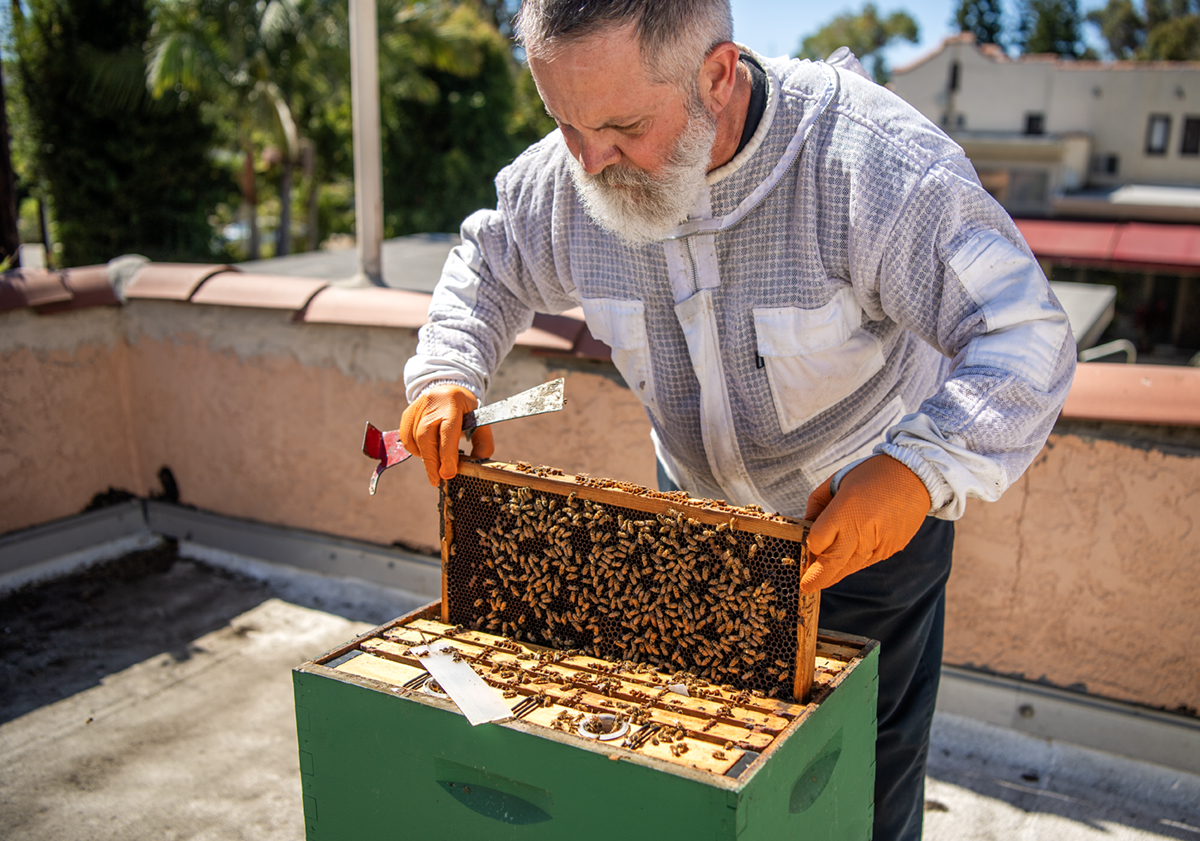Dave Scott has always been interested in bugs and animals, but when he was about 13 years old, he fell in love with honey bees when a swarm landed in his neighbor’s bush.
“There was something so fascinating about them for me. I mean, I could literally just sit in front of a beehive for hours watching them come and go,” Scott said.
His father helped him build his first beehive, and he dove right into his new hobby, learning everything he could from books in the library. As Scott grew up and moved from Indiana to California, beekeeping fell to the side.
But soon, Scott — who works as a mechanic at My Dad’s Auto on Carson Street during the day — was dying to get back into beekeeping. In 2013, he started building up some hives and learned how to take care of bees in California’s Mediterranean climate.
“You’re constantly learning,” Scott said. “I still feel like I’ve just started beekeeping, even though I’ve been doing it for decades.”
As Scott established more hives, it just made sense to start selling the honey he collected, launching S&P Honey in Long Beach about 10 years ago. The S&P stands for Scott and Penrose (his partner’s last name).
Today, he sells gallons of honey through his Instagram and Facebook pages, harvested from the 15 hives he regularly tends to throughout Long Beach.


He started with a single hive on the roof of his garage, but after someone complained, he had to move it. Scott found more locations around town by searching out people who were interested in having a hive on their property and evaluating their space.
Long Beach requires beehives to be at least 10 feet from property lines, and there needs to be a 6-foot barrier (such as a fence or hedges) around the property or the beehive has to be placed 8 feet above the ground. Scott also watches out for small children or dogs that might not enjoy having the bugs nearby.
Living in Long Beach, the bees have a variety of plants at their disposal, meaning the honey is from a variety of flowers, without one dominant flavor.
“If you look at what’s blooming in Long Beach, it’s a mixture of everything,” Scott said.
In the spring and summer months, the honey tends to be very light, then later in the year when different plants are in bloom, the honey is darker.
Though Scott said beekeeping is like farming and there is no guarantee on how much honey is produced due to changes in weather, Scott typically harvests honey two to three times a year.


The process begins when the bees have capped their honeycombs with wax, showing the comb is full. Scott uses a fume board to push the bees out of the boxes so he can take them home to extract the honey. He uses shallow boxes in his hives because they are easier to carry, but he said more commercial beekeepers typically use deeper boxes to get more honey.
Scott brings the boxes full of honeycomb home, where he begins the extraction process, which is shown in this Instagram post. His partner, who is afraid of bees and doesn’t want to go near the hives, helps with the extraction.
They first cut the beeswax off of the combs with a hot knife. Then the honeycomb frames are placed in an extractor, a large steel tank that spins the frames around at a high speed, which flings the honey onto the walls of the machine, where it then drips down into a collection container.
Once the honey is extracted, Scott returns the empty honeycomb to the hive so they can reuse it. The honey Scott collects is strained with a stainless steel screen and bottled to order, with prices ranging from $9 for a 12-ounce jar to $80 for a full gallon.
When Scott harvested in July, he filled two stainless steel tanks, totalling 42 gallons of honey. Now he only has about a third of that left.
Orders can be placed through direct messaging on either Instagram or Facebook.

